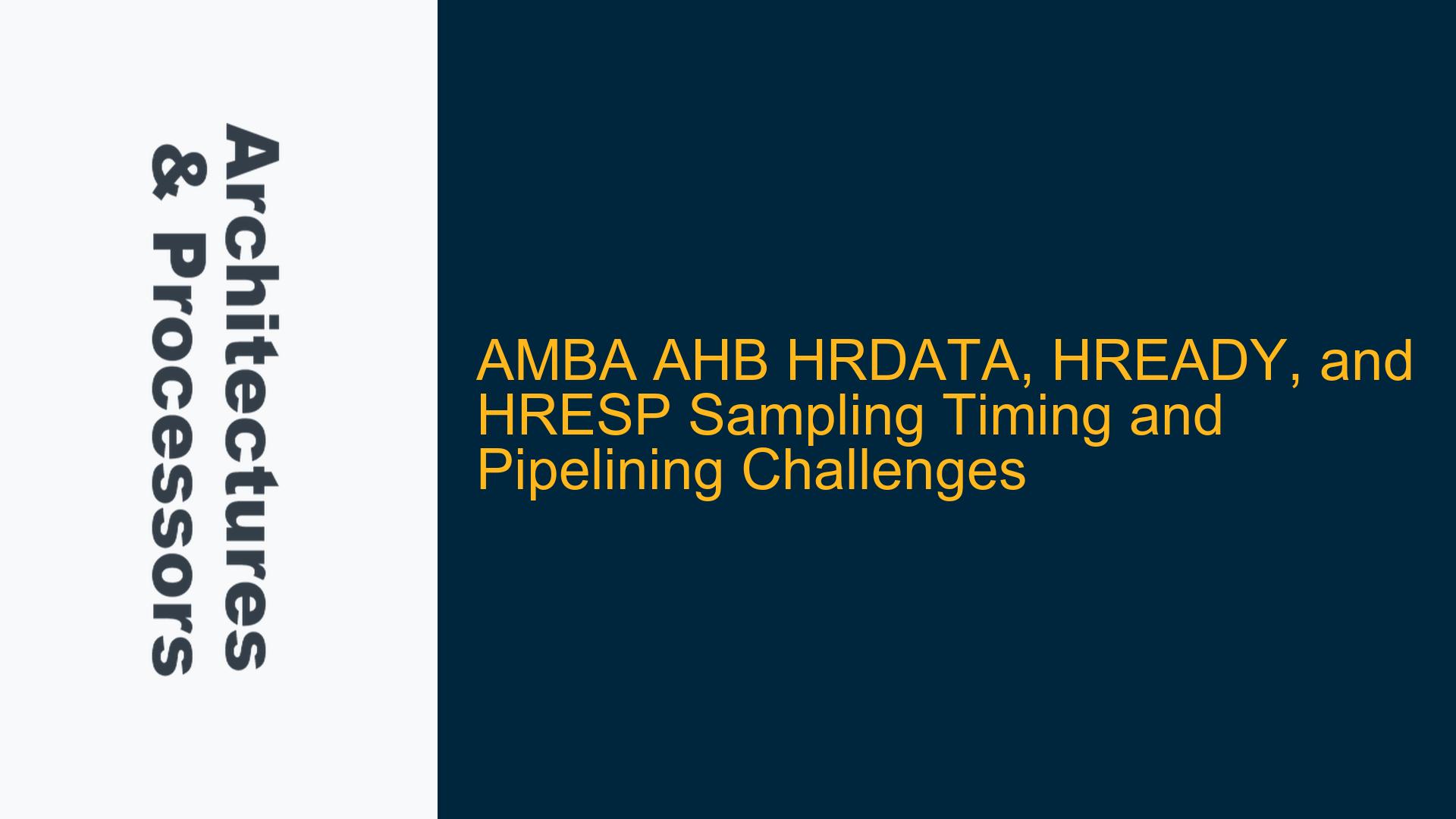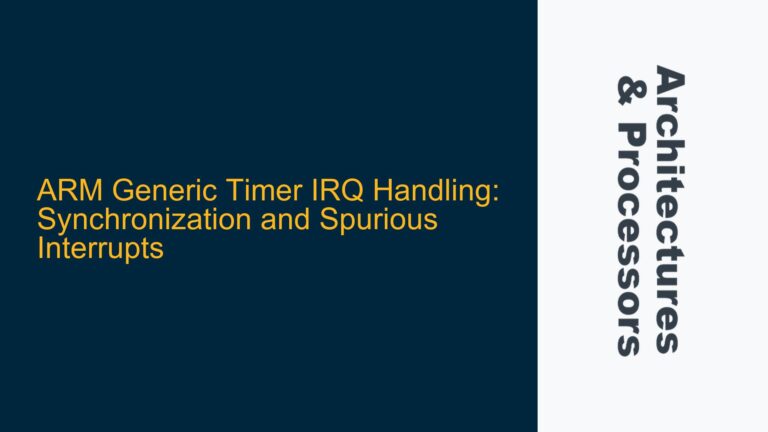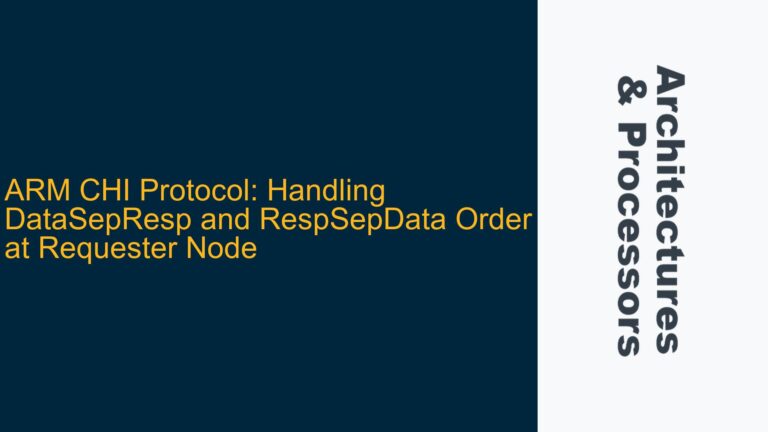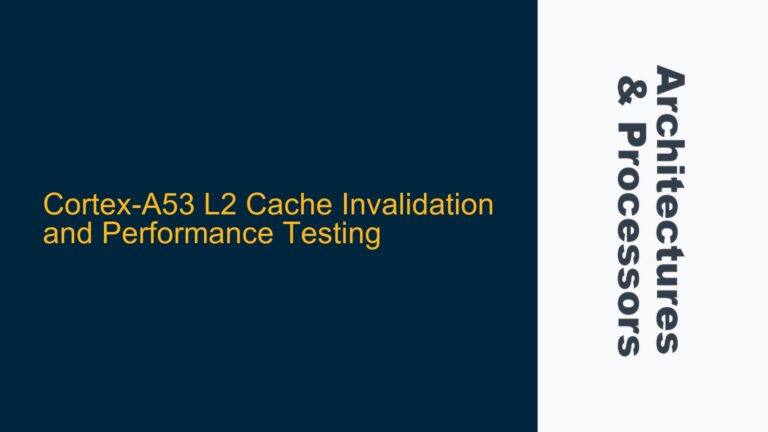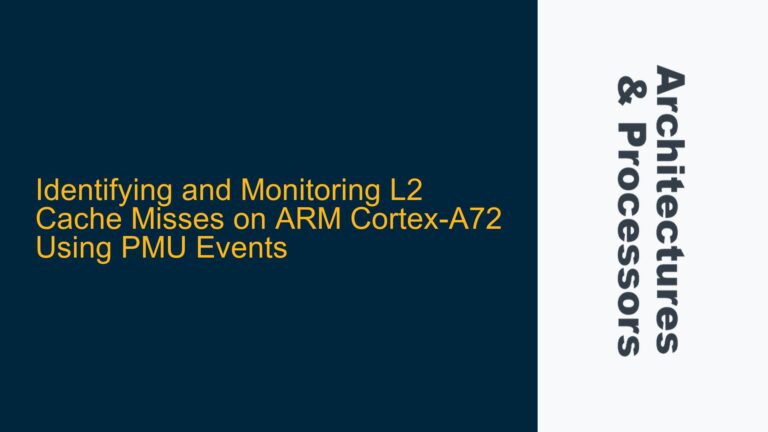HRDATA, HREADY, and HRESP Sampling Timing in AMBA AHB
The AMBA AHB protocol is a widely used on-chip bus standard for high-performance systems, particularly in ARM-based SoCs. One of the most critical aspects of AHB is the timing of signal sampling, especially for HRDATA, HREADY, and HRESP. These signals are essential for ensuring correct data transfer between the manager (master) and subordinate (slave). However, their timing and interaction with the pipelined nature of AHB can lead to confusion and design challenges.
In AHB, all signal transitions and sampling occur on the rising edge of the HCLK clock. This single-edge protocol ensures that signals have a full clock cycle to propagate from the source to the destination, simplifying timing analysis and avoiding half-cycle paths that could limit the maximum operating frequency. However, this also means that the timing of HRDATA, HREADY, and HRESP must be carefully managed to avoid issues such as data corruption, missed transactions, or incorrect error handling.
HRDATA is driven by the subordinate during the data phase of a read transaction. The subordinate must ensure that HRDATA is valid and stable before the rising edge of HCLK when HREADY is high, indicating the end of the data phase. If the subordinate cannot provide the data in time, it can insert wait states by driving HREADY low, effectively extending the data phase. The manager samples HRDATA on the rising edge of HCLK when HREADY is high, ensuring that the data is valid and ready for processing.
HREADY is a critical signal that controls the progression of transactions on the AHB bus. It is driven by the subordinate to indicate whether the current data phase is complete. When HREADY is high, the manager samples the data and proceeds to the next transaction. When HREADY is low, the data phase is extended, and the manager must wait until HREADY is high before proceeding. This mechanism allows the subordinate to insert wait states if it needs additional time to complete the requested operation.
HRESP is used by the subordinate to indicate the status of the transaction. The most common response is OKAY, indicating that the transaction completed successfully. However, the subordinate can also signal an ERROR response, indicating that the transaction failed. The ERROR response is a two-cycle process, with the subordinate driving HRESP to ERROR and HREADY low in the first cycle, and HRESP to ERROR and HREADY high in the second cycle. The manager samples HRESP on the rising edge of HCLK and uses it to determine the outcome of the transaction.
Misalignment Between Manager and Subordinate Timing in Pipelined Transfers
One of the most challenging aspects of AHB design is ensuring proper alignment between the manager and subordinate in pipelined transactions. AHB uses a pipelined architecture to maximize bus bandwidth, allowing the manager to initiate a new transaction while the previous transaction is still in progress. However, this pipelining can lead to timing mismatches if not properly managed.
In a pipelined transaction, the manager initiates the address phase of a new transaction while the data phase of the previous transaction is still ongoing. The subordinate samples the address phase on the rising edge of HCLK when HREADY is high, indicating the end of the previous data phase. However, if the subordinate requires additional time to complete the previous data phase (e.g., due to wait states), the address phase of the new transaction may be delayed, leading to potential timing mismatches.
For example, consider a scenario where the manager initiates Transaction A at time T0. The subordinate samples the address phase of Transaction A at T1 and begins the data phase. If the subordinate requires additional time to complete the data phase, it drives HREADY low at T2, extending the data phase to T3. Meanwhile, the manager initiates Transaction B at T1, assuming that the address phase of Transaction B will be sampled at T2. However, since HREADY is low at T2, the subordinate does not sample the address phase of Transaction B until T3, when HREADY is high. This delay can lead to confusion and potential errors if the manager and subordinate are not properly synchronized.
To avoid such issues, the manager must ensure that it does not initiate a new transaction until the previous transaction has completed. This can be achieved by monitoring HREADY and HRESP to determine the status of the current transaction. Additionally, the subordinate must ensure that it correctly handles pipelined transactions, even when wait states are inserted.
Implementing Proper Synchronization and Error Handling in AHB
Proper synchronization and error handling are critical for ensuring reliable operation of the AHB bus. This involves correctly managing the timing of HRDATA, HREADY, and HRESP, as well as handling error conditions such as ERROR responses and wait states.
When a subordinate detects an error during a transaction, it signals an ERROR response by driving HRESP to ERROR and HREADY low in the first cycle, and HRESP to ERROR and HREADY high in the second cycle. The manager samples HRESP on the rising edge of HCLK and uses it to determine the outcome of the transaction. If an ERROR response is detected, the manager must abort the current transaction and take appropriate action, such as retrying the transaction or notifying the system of the error.
Wait states are another important aspect of AHB synchronization. When a subordinate requires additional time to complete a transaction, it drives HREADY low, effectively extending the data phase. The manager must wait until HREADY is high before proceeding to the next transaction. This ensures that the subordinate has sufficient time to complete the requested operation without causing timing mismatches or data corruption.
To implement proper synchronization and error handling, designers must carefully consider the timing requirements of HRDATA, HREADY, and HRESP. This includes ensuring that HRDATA is valid and stable before the rising edge of HCLK when HREADY is high, and that HRESP is correctly sampled and processed by the manager. Additionally, designers must ensure that the manager and subordinate are properly synchronized, even in the presence of wait states and pipelined transactions.
In conclusion, the timing of HRDATA, HREADY, and HRESP in AMBA AHB is critical for ensuring reliable data transfer between the manager and subordinate. Proper synchronization and error handling are essential for avoiding timing mismatches and ensuring correct operation of the AHB bus. By carefully managing these signals and considering the pipelined nature of AHB, designers can achieve high-performance and reliable operation in their ARM-based SoCs.
